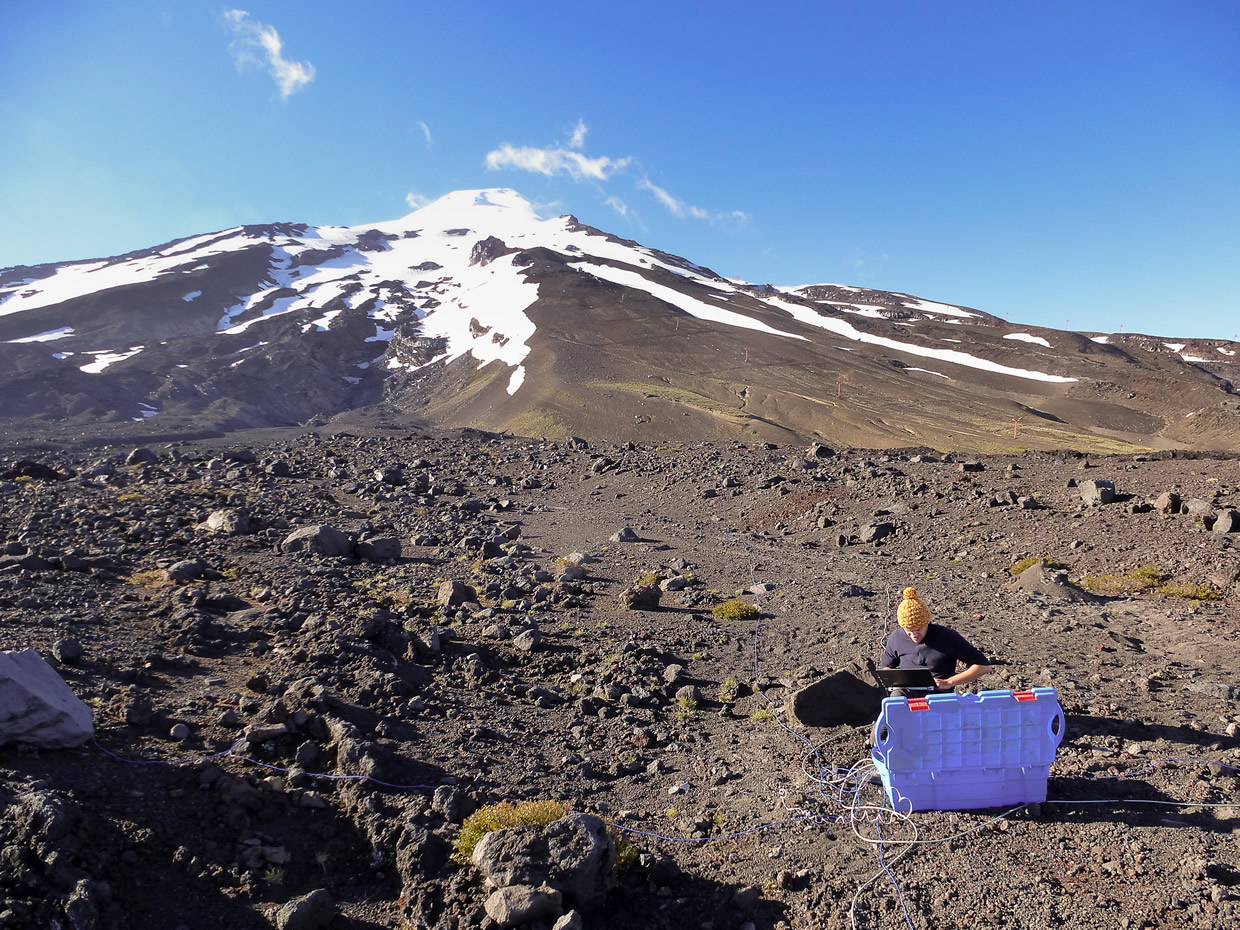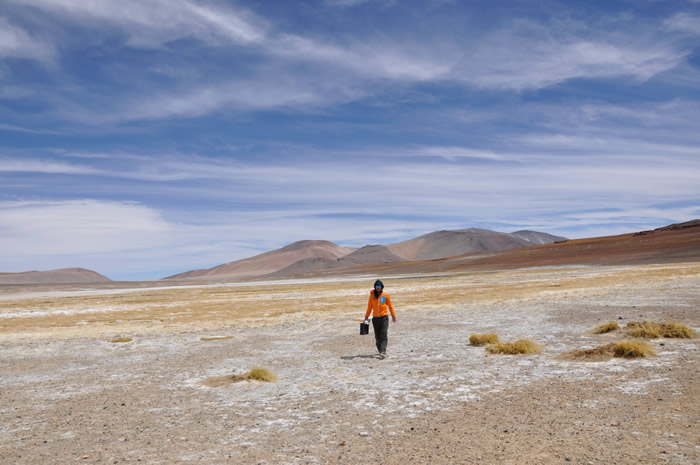MultiGeoEx and ExCapp

Chile is characterized by the subduction zone of the Andes, which forms a volcanic arc in almost all of Chile. These geological conditions result in a large geothermal potential that could be used for sustainable energy production. In 2017, the first power plant in northern Chile was put into operation. The creation of the Centro de Excelencia en Geotermia de los Andes (CEGA), a large geothermal research institution located primarily at the Universidad de Chile, orchestrates the development of geothermal energy in Chile. Since 2012, KIT has been collaborating with CEGA and other Chilean partners on joint projects, master's theses, and dissertations.
The collaboration started with the geothermal exploration of the Villarrica geothermal system in southern Chile. Villarrica is one of the most active volcanoes in South America; the last eruption occurred in 2015 during the project period. The stratovolcano is located at the intersection of major fault zones, the 1200 km long N-S trending Liquiñe-Ofqui fault system (LOFS) and the Moche and Villarrica fault zones, which parallel the Villarrica Quetrupillan-Lanín volcanic chain. More than 20 thermal springs originate in the vicinity of the volcanic chain - evidence of geothermal activity.
In the collaborative projects MultiGeoEx followed by ExCapp , a multidisciplinary approach was developed in 2014 - 2019 to study the characteristics of the Villarrica geothermal system. The projects were funded by the BMBF and the "Förderung der Wissenschaftlich-Technologischen Zusammenarbeit mit Chile", respectively.
Geophysical techniques were applied to study the geometry of the fault zone and its impact on geothermal resources. Emphasis was placed on geophysical measurements using magnetotellurics to characterize the interaction of fault zones. Fault zones could be traced back to the lithosphere. By including gravimetric results, faults could be characterized in terms of porosity and clay content.
Complementary geochemical investigations were carried out to analyze the lithological transition at the in the volcanic chain. Thermal springs were studied with isotope techniques to characterize water-rock interactions. Anthropogenic tracers reveal subsurface mixing and allow in situ determination of geothermal fluids. Based on the results, innovative geothermometer methods for reservoir temperature determination were developed to minimize uncertainties in temperature determinations to a few degrees. Finally, the reservoir properties and fluid circulation system of the geothermal mid-enthalpy system around the Villarrica-Quetrupilan and Lanín volcanic chains were specified.
MultiGeoEx is listed as a Success Project Chile of the International Bureau of the BMBF.
Funded by the


